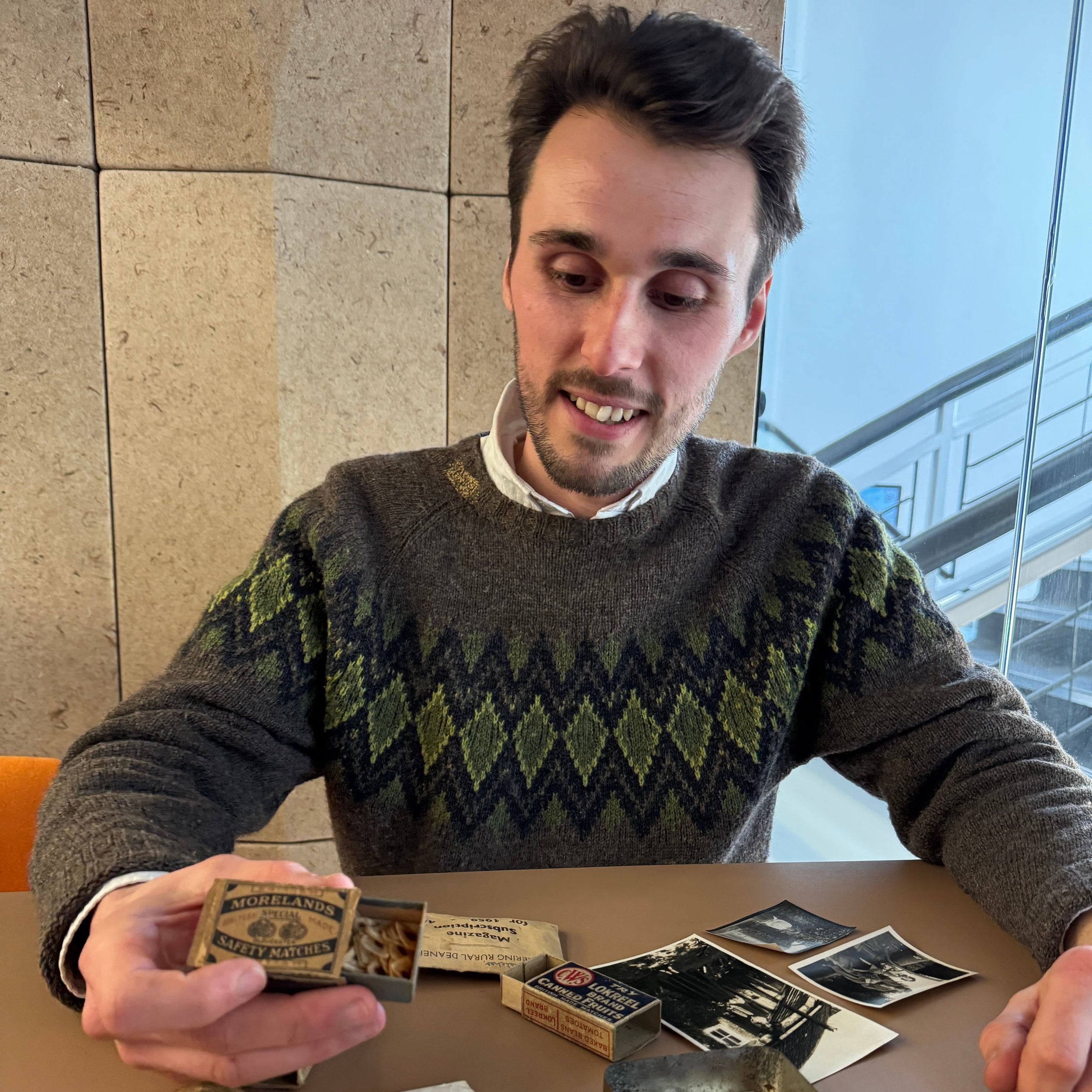Great Uncle Eric’s Old Seeds
Seed Germination Across Generations
This plant story begins in Great Uncle Eric’s potting shed perched on the Yorkshire moors, untouched for 20 years till Richard Bowman, was asked to clear it out. Most of the contents had rotted and went on the bonfire but there was something very precious that Richard kept.
Richard with the seeds he salvaged from the potting shed.
Richard is a professional gardener and his passion for gardening goes back to early childhood when his grandfather would push him down to the allotment in the wheelbarrow. For Richard, the seeds he found in Eric’s potting shed, stored in oxo tins, matchboxes and little envelopes, are far more precious than any other object you might inherit. If he could get them to grow, they could put the colour back into the black and white photographs he has, of his Great Aunt and Uncle in their garden. Perhaps he will glimpse the sweet pea seeds that his great grandfather grew and showed, though he was quite competitive so we don’t know if he did share any of those seeds with Great Uncle Eric!
In the potting shed were not just the seeds but the obituaries that Eric had cut out and saved of fellow gardeners who had died in World War 2 and these inspired Richard’s first show garden. It was a beautiful evocation of the gardens they had left behind as the stepped onto battle fields. Who know’s what these seeds might inspire if they will germinate.
How should you store seeds?
For this we turned to the Seed Detective Adam Alexander. As we learn in this episode if we want to store seeds we need to make sure of three things and those are that we keep them: cool, dry and dark. Apparently the worst place to keep seeds is in a tin in the greenhouse where the temperature goes up and down. In a potting shed in Yorkshire there is the issue of the humidity, though they were in the dark.
Where does Adam store his seeds?
“I keep all my seeds in two fridges in the garage, and the fridge is, to me, ideal because they're kept at 5 degrees centigrade, which is what most living collections, which is what mine is, are sort of kept at. And they are all either in envelopes, in tupperware boxes, all 536 varieties that I have in my collection or they're in jam jars or, you know, little Kilner jars, all sorts of different sized jars.”
Why should we save seeds?
In this episode and in a forthcoming conversation in an Offshoot episode, Adam explains why he is so passionate about saving seeds. His love of plants and gardening also goes back to childhood but his fascination with seeds begins with a pepper he found in a food market in Donetsk in Ukraine over 30 years ago. He has written two books; The Seed Detective and just published The Accidental Seed Heroes. He explains to us that by saving seeds they become ever more resilient and adapted to growing locally. The pepper he got from Donetsk was completely delicious and he has been growing it and selecting seeds from the plants for many generations so now “it is the the first to flower, it's the first to set fruit, and it continues to crop late into the autumn”
“And this is why Richard's story is really interesting, because if you are able to get your seeds to germinate, they've been asleep for 30 years. And in that 30 years, the climate has changed. The garden that your great uncle was growing in is not the same garden that you're growing in today.”
How to do a germination test
We always learn how to grow the plants in the plant story but this is of course a little different. However Adam did share with Richard and therefore with us how to do a germination test on seeds that may be a little bit old. So if you have been rummaging amongst your seed packets and discovered some that have an expiry date long gone or perhaps they were given to you by a friend and you don’t know how old they are, here is how to do a germination test.
Take a small plastic container.
Put a layer of about three or four levels of kitchen towel in the bottom of the container, get it thoroughly soaked with water.
Depending on how many seeds you've got - put at a minimum of 10 and ideally 20 seeds onto that damp kitchen towel.
Put the whole thing in a polythene bag and seal it so it's nice and moist, and put them somewhere warm, like the kitchen windowsill, your warmest room, and watch them.
Richard will be doing this with his precious seeds. Even if he gets to see the tiniest of green shoots he will be excited that something precious to Eric has sprouted and if he could get the sweet peas or the hollyhocks to flower - well I can only imagine the joy.
I will keep you updated via the weekly blog posts so do sign up at the top of the page if you haven’t already. We all wish Richard the best of luck.






